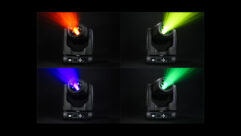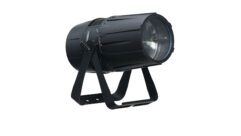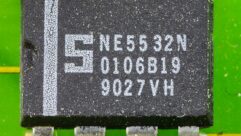Which Pin Is Hot?
The polarity debate was settled long ago. Here are some caveats regarding the proper polarization of sound system components.
It’s not phase“Hot” or “cold”So, which pin is hot?
All audio components that pass a signal must be properly polarized. The concept of polarity can be confusing. Like many principles, it’s most easily explained using non-audio examples. When you change the batteries in a product, the “+” and “-” indicators must be observed. When you drill a hole, the drill bit must rotate clockwise. These are examples of the need to observe proper polarity. In each example, there exists only two possible choices that are mutually exclusive — like flipping a coin. In fact, in most every case you can substitute “flip” for “invert” in polarity discussions without changing the meaning. Polarity must be considered when interconnecting audio components.
I won’t take up the issue of whether absolute signal polarity matters, I’ll just assume that it does. As with all things audio, the answer is always “it depends,” and it’s always better to err on the side of caution. It should suffice to know that improper polarity can be devastating to the response of a sound system under some conditions.
Balanced audio gear, by design, allows the polarity of the signal to be easily reversed. This is both good and bad. It allows for easy correction of mis-wired components, but makes it more likely that those mis-wirings will occur in the first place. This article proceeds on the assumption that correct absolute polarity is desired, where an overpressure at the microphone element should produce an overpressure at the listener.
Loudspeaker polarity can be absolute or relative. Absolute polarity means that the cone moves outward when a positive-going signal is applied to the “+” terminal relative to the “-” terminal. Relative polarity means that the loudspeaker is polarized the same as another loudspeaker(s), without regard as to whether either one has correct absolute polarity. The significance of maintaining correct absolute polarity has been hotly debated for years. There appear to be cases when it matters and when it doesn’t. The need for correct relative polarity isn’t debatable. Loudspeakers producing the same program material whose coverage patterns overlap should be polarized the same in all but a few special cases.
Timing differences affect the phase response of a system, and phase shouldn’t be confused with polarity. Phase shifts are measured in degrees. Polarity is indicated by a sign. Contrary to popular belief, “reverse polarity” and “180-degrees out-of-phase” aren’t the same thing at all. The first involves a sign change, while the second involves a signal delay. Carefully contemplate the difference between the meaning of “shift” and “invert,” and you’ll have it. Many references to phase in the literature and on products are actually referring to polarity.
The inputs and outputs on pro audio gear are balanced. A balanced input is sensitive to a voltage differential between two input terminals that have the same common-mode impedance (a different article!). A balanced output produces a voltage differential between two output terminals that have the same common-mode impedance (same article). One input terminal is non-inverting, and the other is inverting. Both terminals can accept a signal, but one inverts the polarity and one does not. The non-inverting terminal is labeled with a “+,” and the inverting terminal is labeled with a “-.” To further complicate things, the “+” terminal is sometimes referred to as “hot,” and the minus terminal is referred to as “cold.”
The electrical contacts on XL connectors are numbered one through three. Pin 1 is always the connection for the cable shield, and the twisted-pair connects to Pins 2 and 3. This sets the stage for the “which pin is hot?” argument that has raged for years.
This debate was settled many years ago, so let’s put it to rest. AES26 states as a “recommended practice” (its word for standard) that Pin 2 on the XL connector shall drive the non-inverting input (or “hot” input), and Pin 3 shall drive the inverting input or “cold” input. This is no longer debatable. What is debatable is whether it matters, which I will address shortly.
While most audio products comply with AES26, there are a few exceptions:
- Legacy gear designed prior to 1984. If it’s been around that long and is still in production, it’s probably a pretty good design. Manufacturers are reluctant to pull such products from the market to redesign them.
- Modern gear that must remain compatible with legacy gear. A number of modular I/O products exist that must be compatible with products from the past — a case where the longevity of analog electronics may be working against us.
- Modern gear that doesn’t adhere to the standard. Some products don’t need to comply with the standard, because they preserve the polarity of the applied signal.
When it matters
There are several situations where the absolute polarity of a component is critical to maintaining the absolute polarity of a system, including:
- Any time that a component directly interfaces to the atmosphere. This includes both microphones and loudspeakers. A “Pin 3 hot” microphone will invert signal polarity. A reverse-wired loudspeaker will do the same.
- Power amplifiers are interfaced directly to loudspeakers, and the polarity of their output terminals is clearly labeled. This means that the amplifier’s input polarity is critical. A “Pin 3 hot” amplifier input will invert the signal polarity.
- Polarity conventions are also critical when interfacing balanced and unbalanced equipment. Because the unbalanced gear has only one “+” output terminal, it matters whether it drives the inverting or non-inverting terminal on a balanced input. The same is true when connecting a balanced output to an unbalanced input.
When it doesn’t matter
Some components in the signal chain simply pass a voltage waveform on to the next device after modifying it. They’re driven from balanced sources, and their outputs are connected to balanced inputs. Such devices must simply preserve the polarity of the waveform applied to them. In this case, it technically doesn’t matter if the device is “Pin 2 +” or “Pin 3 +,” as long as it’s the same on its input and output. Such devices are often labeled “non-inverting” on their specification sheet. These generally include line level signal processors such as equalizers, delays, crossover networks, and compressor/limiters. Digital signal processors are also in this category, as are mixing consoles driven from balanced sources (i.e. microphones).
This is one reason why polarity can be a confusing topic. Sometimes the absolute polarity between input and output is important (i.e. microphones and loudspeakers), and other times the relative polarity between input and output is the important consideration. This isn’t meant as a justification for not complying with AES26, but it’s important to know nonetheless. The common practice of swapping wires on the inputs and outputs of “Pin 3 +” gear is unnecessary, and causes extra work (and a lot of confusion).
Pat Brown is president of Synergetic Audio Concepts (Syn-Aud-Con) Inc. and Electro-Acoustic Testing Company (ETC) Inc. Syn-Aud-Con conducts training seminars in audio and acoustics worldwide for those who operate, install, and design sound reinforcement systems. ETC Inc. performs precision loudspeaker testing for the audio industry. He can be reached at [email protected].










